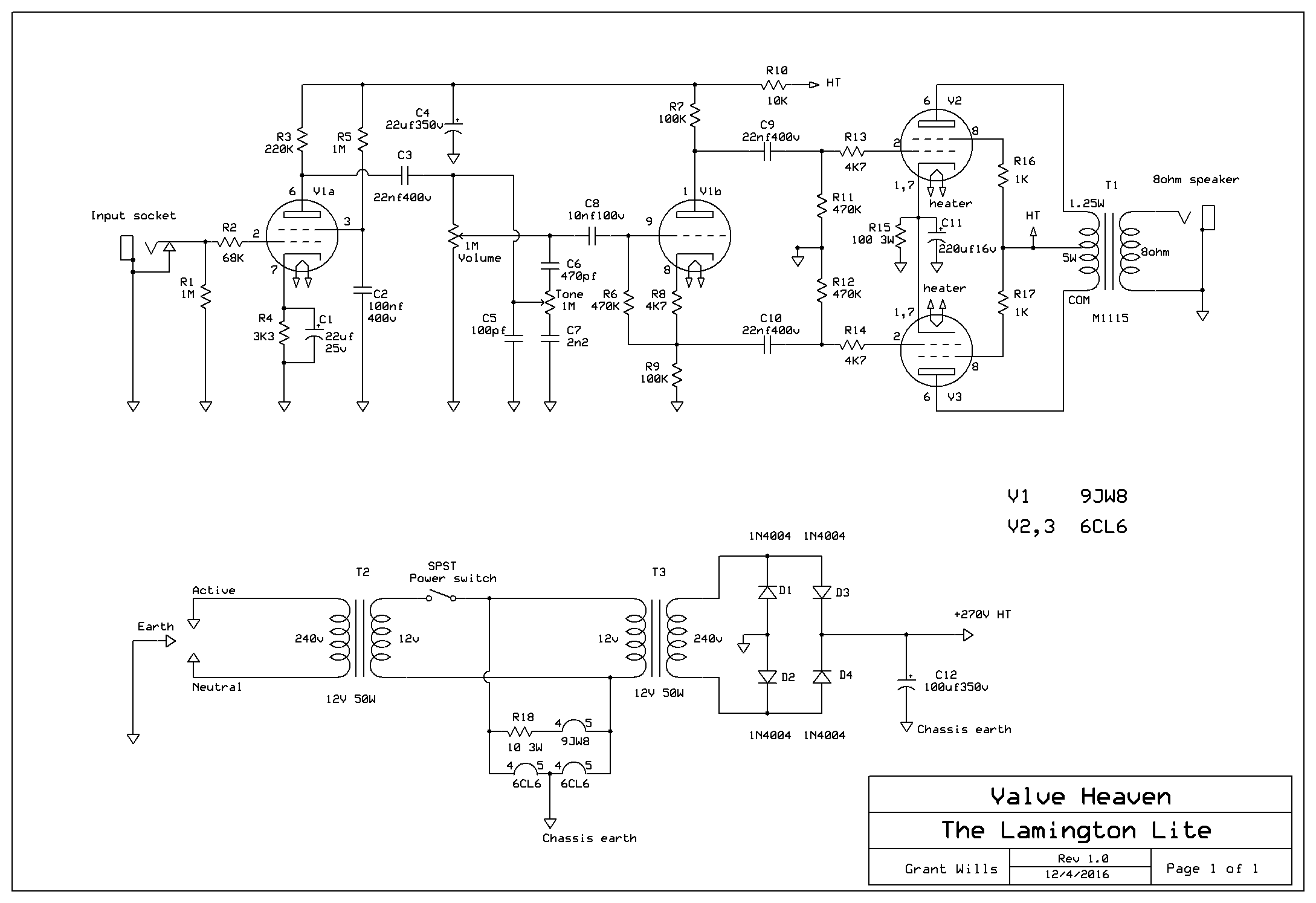Introduction I Design I Sound Clips
In designing the Lamington Lite amp the three key ingredients are power supply, output stage and preamplifier.
The original Lamington amp uses a voltage multiplier or charge pump to develop the 300V or so for the amp. This works well and is used in the Lamington III amp as well. An alternative is to use two transformers “back to back” and this approach is used in the Lamington Junior amp. In developing the Lamington Lite amp I decided to use this arrangement with two 12 volt halogen lamp transformers.
To develop 10W of power, the output stage uses two valves in push/pull. The 10W rating of the amp requires output valves with a plate dissipation rating of at least 9W each. In addition valves that have a high Gm (read gain) simplify the amp design as they need less drive to produce the required power. The Lamington Lite uses 6197/6CL6 valves that fit this requirement very well. The 6CL6 were originally used as video amplifiers and have high transconductance requiring much less drive than typical “audio” valves.
Because of the high gain output stage a simpler preamp can be used. A single dual pentode/triode valve has enough gain to easily drive the output valves reducing the total valve count to three. With the pentode section of the valve providing all of the preamp gain, the triode section is configured as a “concertina” or cathodyne phase splitter to drive the output valves. A 9JW8 valve is used in this position as it was designed to have low microphony and hum – ideal for the preamp.
The schematic diagram shows how the design has been simplified to three valves – a 9JW8 and two 6CL6.
The two 6CL6s are configured as a cathode biased push pull pair driving a M1115 output transformer to produce 10W of output power. As mentioned, these valves have a high Gm spec which has two benefits – first, they need much less drive than typical “audio” valves, and secondly, only require about 5 volts of bias which means that less supply voltage is lost across the cathode bias resistor which increases the output power.
Because less drive is required for the output valves, a much simpler preamp can be used. A single 9JW8 does double duty with the pentode section configured as a medium to high gain preamp and the triode section providing the necessary phase inverter duty for the output valves. A 9JW8 valve was used here for two reasons. Its 9V .3A heater can be supplied from the 12V heater supply with less loss in the heater dropping resistor than a 6V valve. Also, the 6JW8/9JW8 were designed to replace the more common 6BL8/ECF80 in TV sets with an upgraded low microphony/hum spec which is ideal for this amp design.
A simple Fender tweed volume/tone arrangement is used successfully in this amp and is ideal as it has effectively no insertion loss maximising the preamp gain.
The power supply uses two 50VA 12V transformers “back to back” to supply both the valve heaters and after step-up the HT for the amp of around 260V.
So how does this amp sound? It has a big clean tone similar to a Vox AC10 which incidentally also uses a pentode (EF86) preamp. Cranked it sounds not unlike the Lamington Junior maxed out – a favourite around here!

